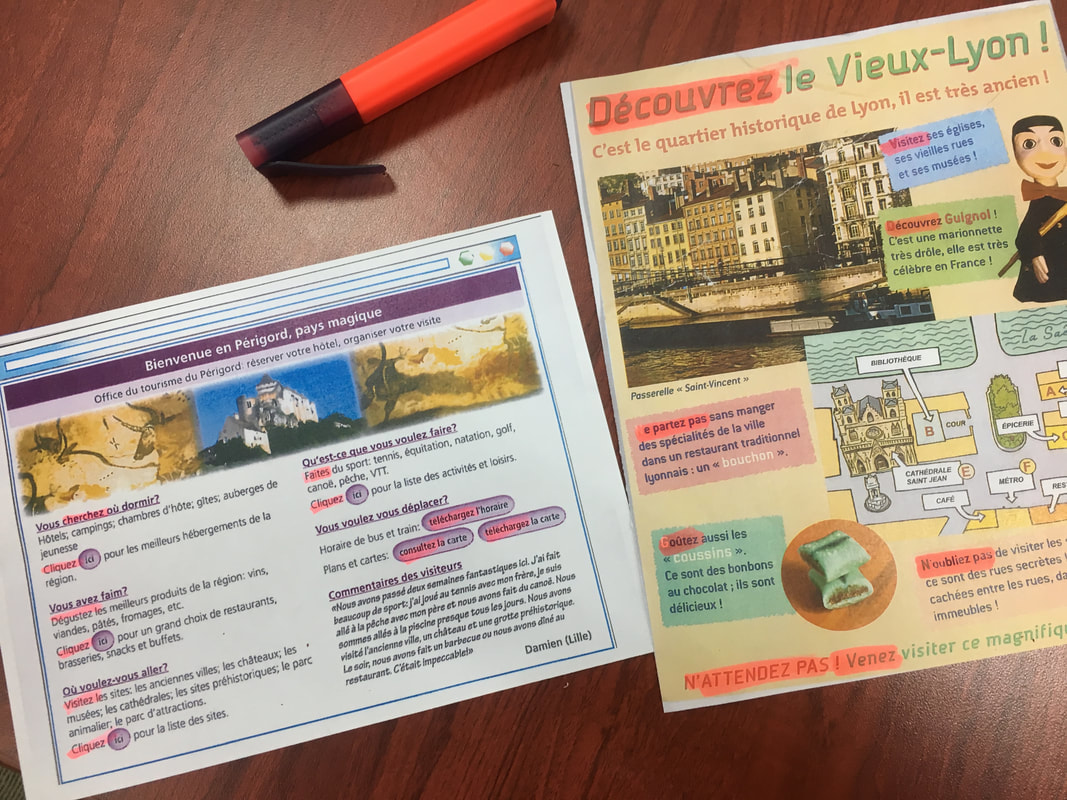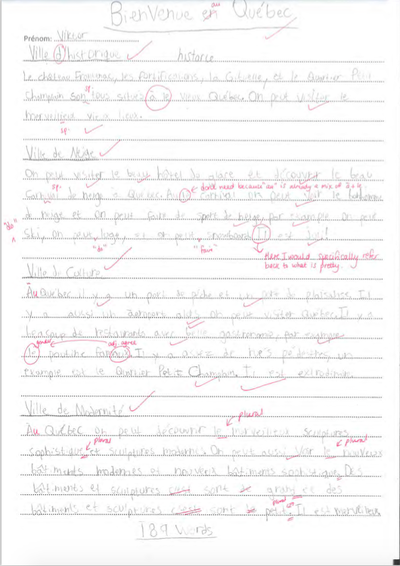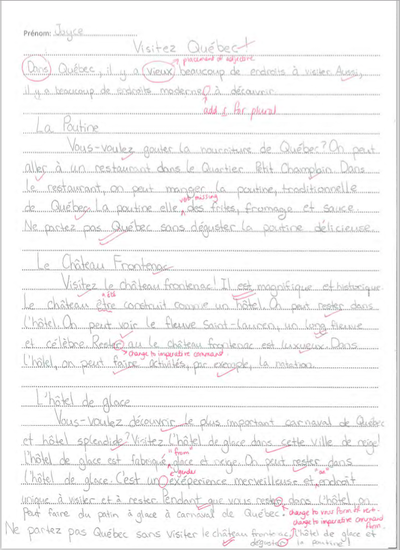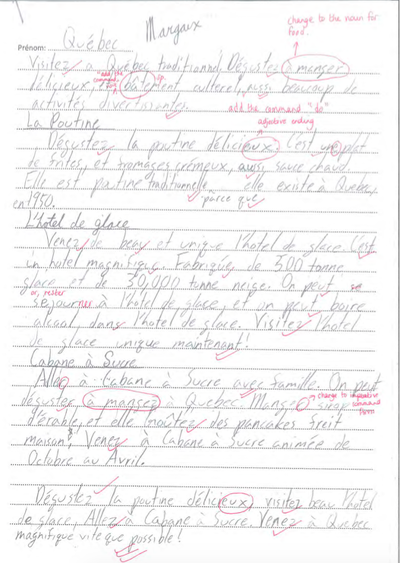|
As you can see from the above statement of inquiry, my French Phase 1-2 students have been investigating how different messages are structures in order to convey meaning. The cultural focus throughout this unit were case studies of the old district of Lyon and the city of Quebec. To introduce the unit the students watched this video about Lyon and were able to answer simple comprehension questions about the video by applying their already extensive knowledge of vocabulary related to the topic of town. After becoming familiar with places and culture unique to Lyon such as the traboules and bouchons, we looked at the text from page 14 of Le Mag 2 to identify the structure and types of language used in a persuasive text such as a brochure or poster, and then we looked at the qualities of a web page using the text on Le Périgord from page 62 of Expo 4 Vert OCR. We practised the following grammatical structures:
Of course, as we were completing this unit there were high expectations to learn the relevant vocabulary and grammatical structures. The quiz sets that I created on www.quizlet.com are below and here is my post on how to make a Google Form into a Google Quiz.
With all of this completed, we moved on to look at a case study of Quebec. Although I would have loved for the students to have done individual research of a city or region in a Francophone country, it can be very difficult for them to find relevant specific information that they can simplify down into language that they can communicate effectively. As such, we looked at a case study of Quebec as a class. This video is a perfect example of how a message can be structured to communicate effectively (see statement of inquiry above) and an excellent opportunity to analyse the conventions of a text:
After watching the video and completing the worksheet, the students did a simple activity matching pictures to the place names. The students were encouraged to search these places up online to learn more about them. Finally the students were ready to prepare their persuasive text about Quebec City that they would write in exam conditions. Below you can see the task that there were given along with the checklist of things to include: Here are some examples of the written work produced at the time of the in-class assessment.
0 Comments
Leave a Reply. |
juliet orchard
I have been teaching French and Spanish for 13 years. I qualified and started teaching in the UK, and I currently work at Shanghai Community International School, China. I have experience teaching GCSEs and IB DP and MYP. Find out more about me within these blog pages or below at LinkedIn. ArchivesCategories
|





